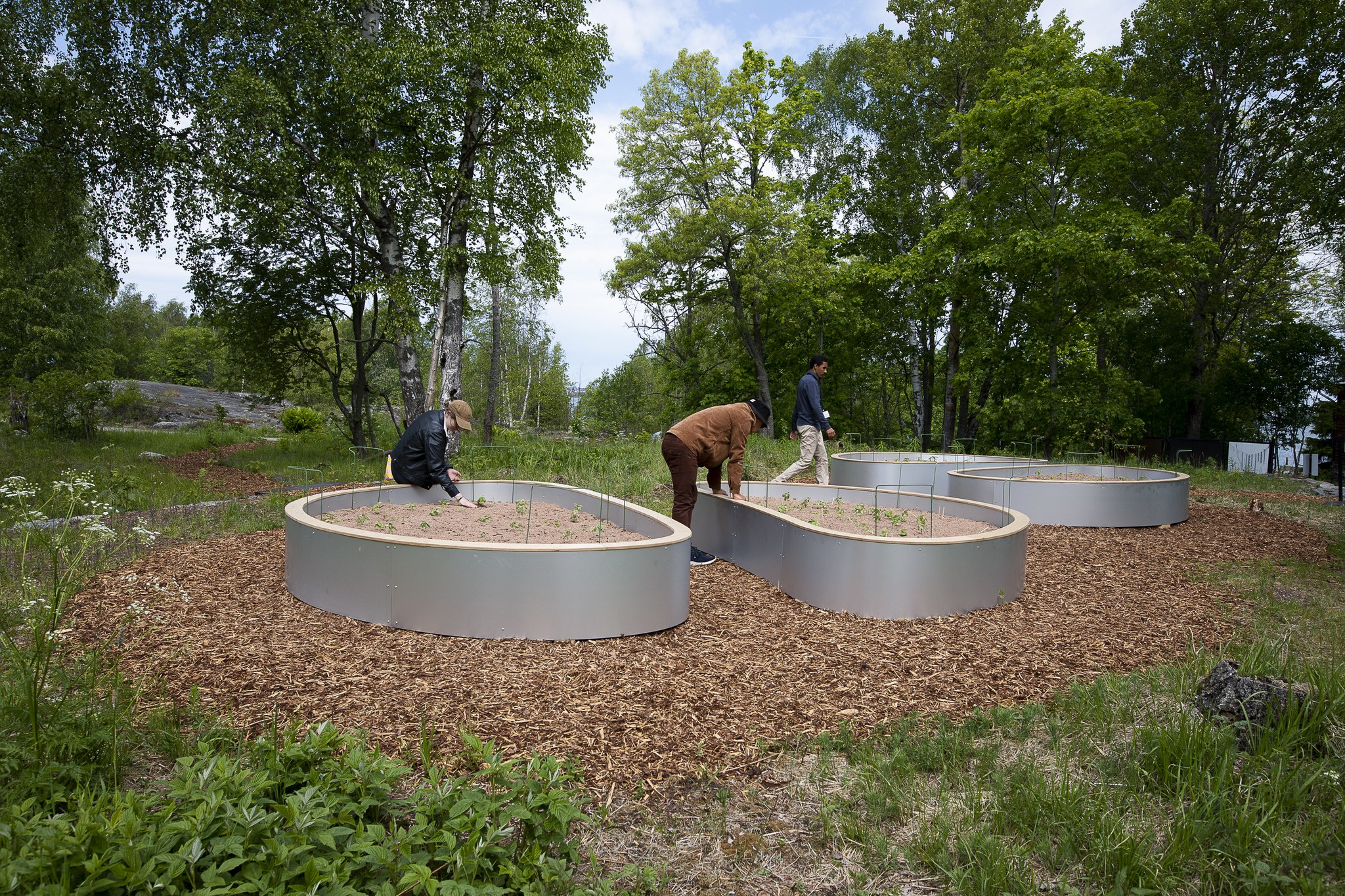PHOSfate is a collaboration between Mohamed Sleiman Labat, an artist and writer born in the Sahrawi camps of southwest Algeria, and Pekka Niskanen, a media artist, filmmaker and researcher based in Helsinki.
The sandoponic garden made for Helsinki Biennial 2023 was part of the ongoing PHOSfate project, which addresses phosphorus and its impact on the Sahrawi, but also the environmental challenges, climate change and sea eutrophication caused by fertilizers. Phosphate mining is the reason the Sahrawis are losing their nomadic way of life. Meanwhile, fertilizers made of a phosphate rock in Western Sahara end up polluting the Baltic Sea, where they increase phosphorus fluxes, leading to oxygen depletion and death of marine life.
Sand surrounds the Sahrawi in huge quantities, yet it is not common to think of it as a source of food. The Sahrawis have begun using sand for organic farming. The Sandoponic garden is the most important new model for growing plants in a controlled sand environment that is designed to preserve as much water and biological nutrients in the desert as possible.
With sandoponic gardens, the Sahrawi are rethinking their relationship with sand as a medium for growing food. Inspired by the model developed in the camps, the gardens on Vallisaari Island were used for growing basil, coriander, carrots, potatoes, kale and lettuce, the same plants as those farmed in Sahrawi gardens.
One came all the way from the desert, the other from inland Finland. The desert and the sea may not seem, at first, to have much in common, but the impact of human actions on these two separate environments awakened us to the realization that our fate is linked. Our conversations became the common ground on which we stand – our shared island.
PN: We met for the first time on an island in the Baltic Sea. We went looking for evidence of algae. As it was late August, the blue-green algal blooms had almost disappeared and barely a trace was left visible.
MSL: I stand in front of the sandstorm, I see huge dust plumes rising high, my heart beating fast, I feel confused, scared, excited and tense. I know that sandstorms bring life and death. They can be destructive. They can blow away our tents and destroy our homes, but they also carry seeds of new life. They carry phosphorus particles; they fertilize plants in distant lands.
A desert is beginning to bloom with thousands of family gardens – and a sea is meanwhile blooming with blue-green algae, yet in some places, it is turning into a desert-like environment because of the processed fertilizers used in industrialized farming.
Mohamed Sleiman Labat & Pekka Niskanen

PHOSfate: PHOSfate, 2023. © HAM/Helsinki Biennial/Kirsi Halkola
PHOSfate
PHOSfate
2023
site-specific installation (structure, sand, plants)
Thank you:
Algaada Centre for Agricultural Research and Experimentation
Taleb Brahim
Viivi Koljonen, Art School Maa
The artists have received funding from Kone Foundation & Jenny and Antti Wihuri Foundation.
Courtesy of the artists.